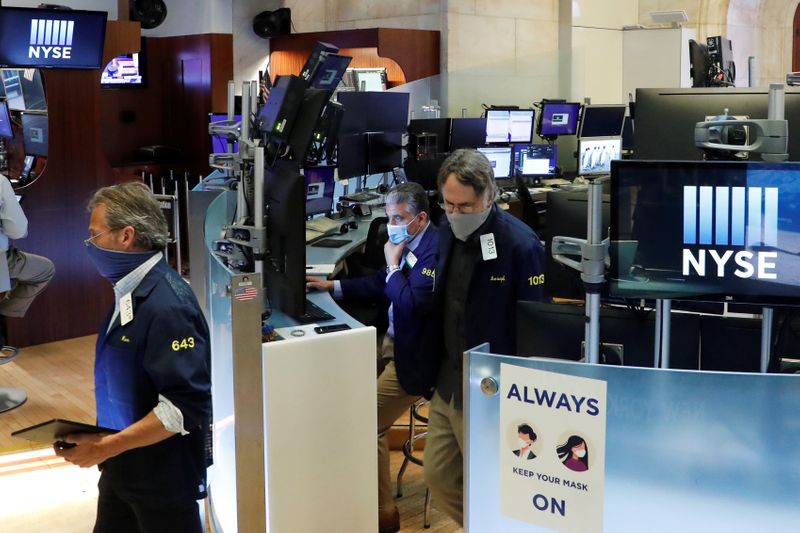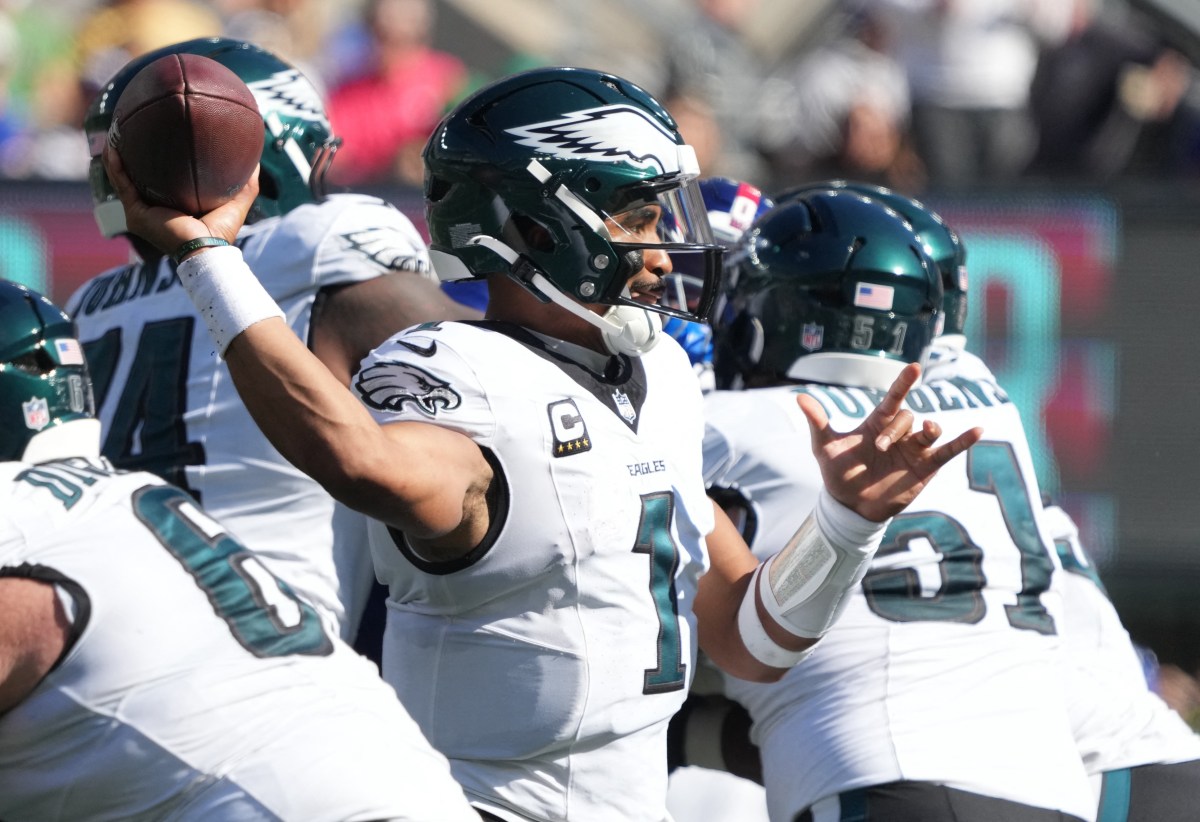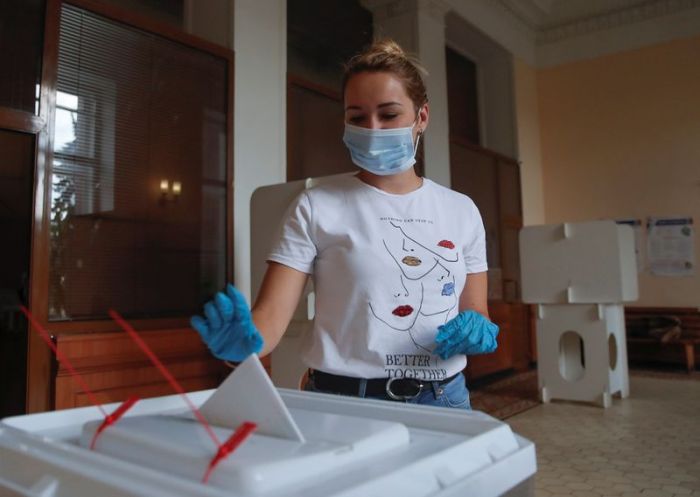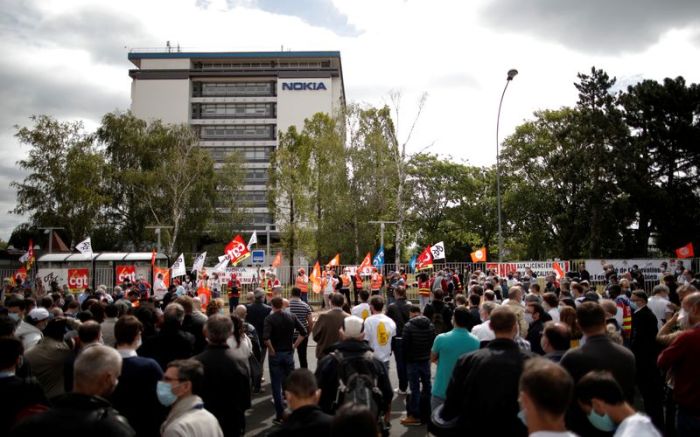NEW YORK (Reuters) – A global stocks index rose on Tuesday and marked its largest quarterly gain since 2009 as investors continued to look for signs of an economic recovery while shrugging off data showing a rising number of COVID-19 cases.
The possible return of Libyan oil production, which has been at a trickle since the start of the year, weighed on crude prices.
World shares rose 18.7% this quarter, the biggest quarterly gain in 11 years, but are still down more than 7% so far this year due to a slump of 34% between Feb. 12 and March 23.
The recent gains come as the coronavirus-related lockdowns that paralyzed the global economy in the first quarter started to lift and investors bet on pent-up demand powering economies higher.
U.S. consumer confidence rose more than expected in June, following upbeat housing data on Monday.
COVID-19 cases in the United States and globally continue to rise, however. Dr. Anthony Fauci, the top U.S. epidemiologist, told a Senate committee on Tuesday that unless Americans wear masks and recommit to social distancing, the daily case-load could reach 100,000 from the current 40,000.
Some traders said quarter-end flows were also supportive of stock prices. Following a steep drop in February and March, Wall Street’s S&P 500 ended June with its largest quarterly gain since 1998. [.N]
“We are finishing up one of the best quarters in history, so we wouldn’t be surprised to see a little bit of window dressing taking place on the last day,” said Sal Bruno, chief investment officer at IndexIQ in New York.
The Dow Jones Industrial Average rose 217.08 points, or 0.85%, to 25,812.88, the S&P 500 gained 47.05 points, or 1.54%, to 3,100.29 and the Nasdaq Composite added 184.61 points, or 1.87%, to 10,058.77.
The near 20% quarterly increase on the S&P 500 was its largest since late 1998.
The pan-European STOXX 600 index rose 0.13% and MSCI’s gauge of stocks across the globe gained 1.04%.
Emerging market stocks rose 0.11%. Overnight, MSCI’s broadest index of Asia-Pacific shares outside Japan closed 0.67% higher, while Japan’s Nikkei futures lost 0.09%.
For a graphic on World financial markets in 2020:
https://fingfx.thomsonreuters.com/gfx/mkt/nmopajllwva/Pasted%20image%201593383581288.png
Brent crude slipped as traders took profits from the previous session and Libya’s state oil company flagged progress in talks to resume exports, potentially boosting supply. [O/R]
U.S. crude fell 0.18% to $39.63 per barrel and Brent was at $41.14, down 1.37% on the day.
For a graphic on Global markets and the tale of two quarters:
https://fingfx.thomsonreuters.com/gfx/mkt/yzdpxrrxwpx/Pasted%20image%201593105658002.png
The dollar index was in and out of negative territory as upbeat U.S. and Chinese data left traders torn between optimism about global growth and fears that the surge in new COVID-19 cases could jeopardize the rebound.
The dollar index fell 0.043%, with the euro down 0.06% to $1.1233.
The Japanese yen weakened 0.34% versus the greenback at 107.94 per dollar, while sterling was last trading at $1.2398, up 0.83% on the day.
Beijing unveiled the national security law it is imposing on Hong Kong, setting the stage for the most radical changes to the former British colony’s way of life since it returned to Chinese rule 23 years ago.
“This doesn’t improve Hong Kong’s status as a financial center, to say the least, coming back from the protests and the virus over the last year,” said Ilan Solot, FX strategist at Brown Brothers Harriman in London. “If anything this is a downward slope for Hong Kong’s importance as a global financial hub.”
(Reporting by Rodrigo Campos; Additional reporting by Elizabeth Howcroft in London, Uday Sampath Kumar and Devik Jain in Bengaluru, Laura Sanicola in New York and Karen Pierog in Chicago; Editing by Bernadette Baum and Leslie Adler)
























